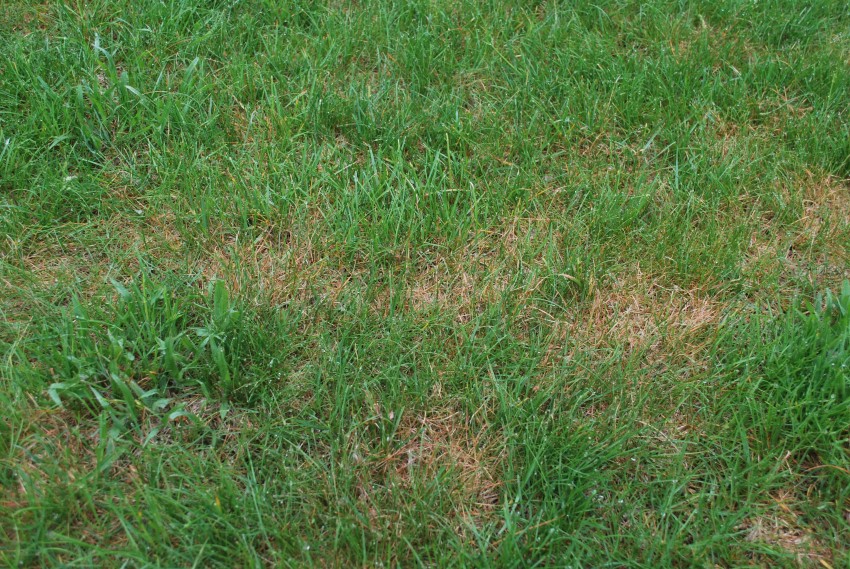High humidity, moisture, stress conditions and certain types of grass can create favorable conditions for many types of lawn fungus. When lawn fungus diseases are suspected or present, identification of the type of fungus is crucial in order to develop a treatment plan that will return your landscape to good health. Depending on the type of lawn fungus, your lawn care specialist can develop a preventative program that includes suggestions for improving drainage, recommended mowing heights, irrigation settings and fungicide applications or specific lawn fertilizers.
Some common types of lawn fungus include:
- Dollar spot is most common on bent grass, but it affects all cool season turf grasses including Kentucky Bluegrass. It is caused by a type of grass fungus called sclerotinia homoeocarpa. Environmental conditions favoring dollar spot lawn disease are warm days and cool-warm nights with high humidity or prolonged dew. While a professional lawn care expert can best diagnose dollar spot, early symptoms are small yellow spots on blades of grass which expand to develop a straw colored band on the blade of grass. If dollar spot does not receive treatment, it can cause spots of straw-colored turf in your landscape. It can generally be thought of as a summer lawn disease, occurring primarily from June to September.
- Powdery mildew fungus is common on many types of grass and other ornamental plants in the landscape. Powdery mildew fungus can be found mostly during the fall in shaded, humid areas with moderate temperatures. Identification of powdery mildew can be easier than other types of lawn fungus because it is aptly named. Powdery mildew looks like patches of white or gray mildew on the blades of grass or other plants. Powdery mildew grass fungus can begin growing as soon as the grass starts to grow early in the spring. Damp, shady areas of your lawn are more susceptible to this type of lawn fungus. Your lawn care professional may recommend improving drainage, air circulation or reseeding with resistant varieties to help cure powdery mildew.
- Patch Diseases, including Summer Patch and Brown Patch Summer patch, brown patch and other similar patch diseases are caused by a group of fungi that infect the grass roots and are difficult to diagnose and manage. The challenge with summer patch, brown patch and other similar patch diseases is that the symptoms often are not visible until damage has been done to the roots, so we recommend that treatments for patch diseases be done on a preventive basis. Symptoms normally become obvious when the lawn is under stress such as hot weather in late summer or during periods of damp weather where drainage is a problem. Patch disease infection doesn’t become obvious until the plants go into stress, normally in June or July from the summer heat and reduced rain. Summer patch is a relatively new type of disease for our geographic region and occurs most often in Kentucky Blue Grass, but also can occur in many other types of grass. Newly planted, young grass is particularly susceptible to brown patch disease. Symptoms of brown patch can vary greatly and can be mistaken for other types of lawn disease including dollar spot, so a lawn care specialist is the best resource for identifying it. Brown patch can develop rapidly – sometimes within 24-28 hours — when the weather is hot or very humid. Special fungicides can be applied as a preventive measure or to treat existing brown patch disease.
Call today for a complimentary consultation from our fully trained and certified professionals for lawn disease treatment, lawn maintenance, and lawn care from Sunlight Water & Us.

